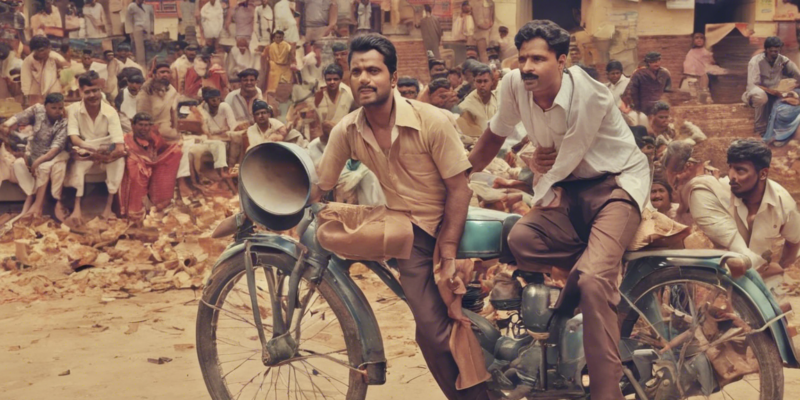Bihar, located in the eastern part of India, is one of the oldest inhabited places in the world with a rich history dating back to ancient times. The state is divided into 38 districts, each with its own unique culture, history, and significance. In this article, we will delve into the different districts of Bihar, their major attractions, historical importance, and cultural heritage.
Understanding Bihar’s Districts
Bihar is a state known for its cultural heritage, historical significance, and religious diversity. Each district in Bihar contributes to the overall tapestry of the state, offering a glimpse into its past and present. Let’s explore some of the key districts of Bihar:
Patna District
Patna, the capital city of Bihar, is located on the southern bank of the river Ganges. It is one of the oldest cities in India and has been an important center of trade, commerce, and culture for centuries. Patna is home to several historical sites such as Golghar, Patna Museum, Mahavir Mandir, and Kumhrar. The city also serves as a gateway to other parts of Bihar and is well-connected by road, rail, and air.
Gaya District
Gaya is a district in Bihar renowned for its religious significance. It is a major pilgrimage site for Hindus and Buddhists, with attractions such as the Mahabodhi Temple, Vishnupad Temple, and Bodhi Tree. The district also hosts the famous Pitru Paksha Mela, where people pay homage to their ancestors. Gaya is an important center for spiritual seekers and history enthusiasts alike.
Nalanda District
Nalanda district is famous for being the ancient seat of learning in India. It is home to the Nalanda University, which was a renowned center of education in ancient times. The district also has attractions like the Nalanda Archaeological Museum, Hiuen Tsang Memorial Hall, and Pawapuri. Nalanda is a must-visit for those interested in history, archaeology, and ancient Indian knowledge systems.
Bhagalpur District
Bhagalpur is a district in Bihar known for its silk production and trade. The city is famous for its Bhagalpuri silk, also known as Tussar silk, which is highly prized for its quality and texture. Bhagalpur is also home to attractions like the Vikramshila University, Mandar Parvat, and the Budha Stupa. The district is a blend of history, culture, and natural beauty.
Vaishali District
Vaishali district holds immense historical and religious significance. It is believed to be the birthplace of Lord Mahavira, the 24th Tirthankara of Jainism. Vaishali is also mentioned in the Hindu epic Ramayana as the city of King Vishal. The district is home to sites such as the Kolhua Archaeological Site, Bawan Pokhar Temple, and Vaishali Stupa. Vaishali is a treasure trove of ancient tales and archaeological wonders.
Must-Visit Places in Bihar
- Mahabodhi Temple: A UNESCO World Heritage Site in Bodh Gaya, it is where Lord Buddha attained enlightenment.
- Takht Sri Patna Sahib: A Sikh pilgrimage site in Patna associated with the tenth Sikh Guru, Guru Gobind Singh.
- Kakolat Falls: A scenic waterfall located near Nawada, perfect for nature lovers and photography enthusiasts.
- Rajgir: An ancient city known for its hot springs, caves, and historical ruins dating back to the Magadha empire.
- Kesaria Stupa: One of the tallest stupas in the world, located in East Champaran district, showcasing Buddhist architecture and history.
Frequently Asked Questions (FAQs)
- What is the best time to visit Bihar?
-
The best time to visit Bihar is during the winter months from October to March when the weather is pleasant.
-
Is Bihar safe for tourists?
-
Like any other destination, it is advisable to exercise caution and follow safety guidelines while traveling in Bihar.
-
What are the famous festivals celebrated in Bihar?
-
Bihar celebrates festivals like Chhath Puja, Sonepur Mela, and Teej with great fervor and enthusiasm.
-
How is the transportation connectivity in Bihar?
-
Bihar has a well-connected network of roads, railways, and airports, making it easily accessible for travelers.
-
What are the traditional crafts of Bihar?
- Madhubani painting, Sikki grass craft, and Sujini embroidery are some of the traditional crafts practiced in Bihar.
In conclusion, Bihar’s districts offer a rich tapestry of history, culture, and spirituality waiting to be explored. Each district has its own story to tell and attractions to mesmerize visitors. Whether you are a history buff, nature enthusiast, or spiritual seeker, Bihar’s districts have something unique to offer for everyone. So pack your bags, embark on a journey to Bihar, and uncover the hidden gems of this historically and culturally rich state.

